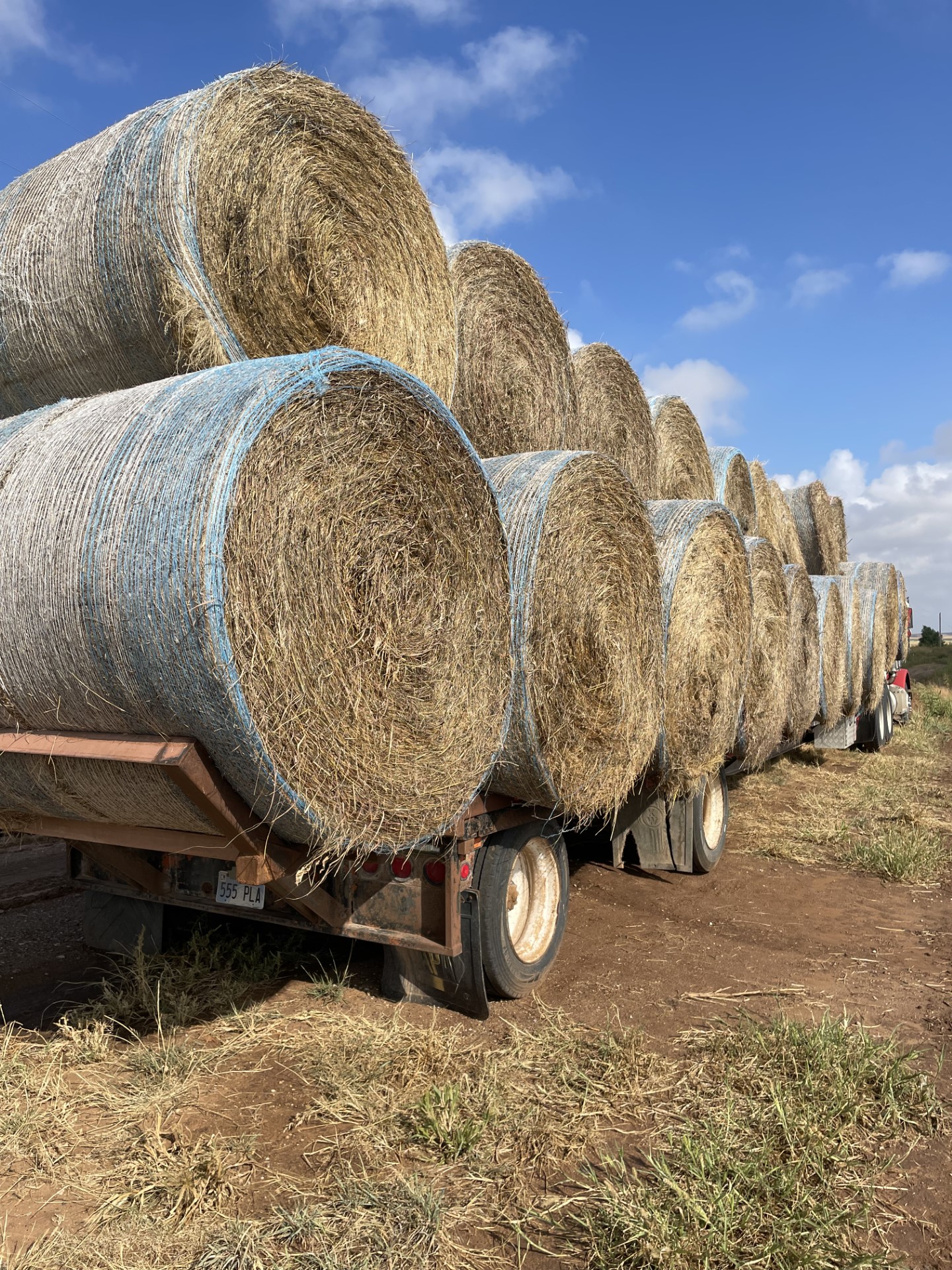State-By-State Hay Summary

Colorado—In the Sept. 12 report, trade activity moderate on light demand. Stable hay sold steady to $2 lower per bale. According to the NASS Colorado Crop Progress Report for week ending Sept. 8, alfalfa second cutting harvested is 95%, third cutting 57%, fourth cutting 1%. Stored feed supplies were reported as 2% very short, 9% short, 70% adequate, and 19% surplus. Corn harvested for silage is 37%.
Missouri—In the Sept. 12 report, hay prices are steady to weak. The supply of hay is moderate to heavy, and demand is light. Lack of any significant moisture over the last few weeks has taken a toll on around the state. There have been reports of some hay feeding taking place in some of the driest areas as pastures are no longer adequate. Many are hoping as fall nears rains will come and get grasses back to growing soon, even though there has been a lot of hay baled this season it is way too early to be feeding at this point.
Nebraska—In the Sept. 12 report, compared to last report, all reported hay sales sold steady on light test. Demand is mostly light with a few loads of hay getting sold.
Oklahoma—In the Sept. 13 report, compared to the last report, hay trade is at a standstill. Some prices of hay have dropped but most are staying steady. Drought is settling back into Oklahoma. Next report will be released Sept. 27.
Texas—In the Sept. 6 report, compared to last report, hay prices are mostly steady to weak across all regions. Hay trade is still pretty limited on light to moderate demand. As hay prices continue to decline in Texas and surrounding states hay movement may pickup. According to Hay and Forage Grower, double digit price declines were noted across multiple states during July. Nebraska, Kansas, Colorado, and Arizona all posted $15 per ton declines. They were followed by Texas with a $13 per ton drop. Montana, Nevada, South Dakota, Washington, and Wyoming were all down by $10 per ton. Next report will be released Sept. 20.
South Dakota—In the Sept. 13 report, compared to last report, demand has been slower than normal.
New Mexico—In the Sept. 13 report, compared to last week, hay is steady, demand is light with not much movement. According to the NASS, New Mexico Crop Progress report Sept. 8, nearly all New Mexico producers saw adequate to abundant moisture last week. Alfalfa hay is in the third cutting with 91% complete, fourth cutting 71% and fifth cutting 31% complete. Hay and roughage supplies were reported as 18% very short, 33% short, and 49% adequate, compared with 25% very short, 42% short, 32% adequate, and 1% surplus last week.
Wyoming—In the Sept. 12 report, compared to the last report, all reported forages sold steady on a thin test. Demand was light. Best demand is for grass hay which is in tight supply and for small squares getting shipped back to the race horse industry in the eastern half of the U.S. Large squares are rather stagnate for this time of year. Seeing contacts in the western side of Wyoming this week there are piles of 2023 large squares with a lot of new crop hay sitting next to them. Many producers still have one cutting of hay left to cut for the 2024 season. Some hay producers are thinking of tearing up some acres of alfalfa next year and will rotate a grain or edible bean to the mix.
Montana—In the Sept. 13 report, compared to last report, hay sold mostly steady. New crop hay continues to see slow movement. Most producers are seeing light interest. Producers are slow to move hay as many are holding on hoping for higher prices come this winter. Movement is very slow as a result. High quality hay is hard to find according to hay buyers, as most hay is in the utility to fair quality. Many are passing on lower quality hay and buying up good and higher quality hay. Rancher to rancher sales are also continuing to make an impact on the market as they sell excess loads. Demand for grass hay is moderate as many buyers are looking for this class to wean calves on. Producers continue to want to wait and see what kind of weather pattern emerges this winter. Many are hoping for a cold and snowy winter so they can feed through some lower quality hay. The vast majority of old crop hay has been cleaned up, however deliveries are continuing to be seen.



